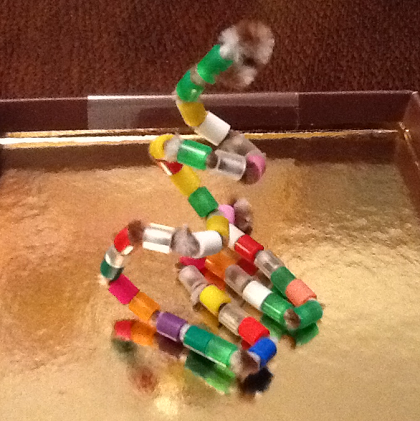Protein Structure.
 Knowing the four levels of proteins structure is essential if we are to understand how proteins function in the body. In the first activity students model the different components of protein structure using beads and pipe cleaners in the lab. With this understanding students research some functions of proteins and the discover a curious protein folding computer game.
Knowing the four levels of proteins structure is essential if we are to understand how proteins function in the body. In the first activity students model the different components of protein structure using beads and pipe cleaners in the lab. With this understanding students research some functions of proteins and the discover a curious protein folding computer game.
Understanding which proteins are active in any one cell at any one time is the new holy grail in cancer research and proteomics is already promising huge opportunities for individualised medicine and new cancer treatments in the near future.
Lesson Description
Guiding Questions
How many different amino acids are there for the cell to use?
How many different proteins can there be in any individual cell (called Its proteome)?
How can a small number of amino acids form such a huge number of proteins?
How does a protein's structure influence its function?
Activity 1 - Building a polypeptide - modelling the work of a ribosome
Follow the instruction in the ![]() Building models of protein structure worksheet to build a range of polypeptides just as a ribosome might do. Answer the questions about protein structure on the sheet.
Building models of protein structure worksheet to build a range of polypeptides just as a ribosome might do. Answer the questions about protein structure on the sheet.
Activity 2: Building a complex protein from a simple amino acid chain (Foldit gaming)
Watch this six minute introduction to a growing online gaming community solving 3D puzzles and helping biological problems.
Activity 3 - Proteomics is going to be the key to personalised medicine?
The study of the proteins expressed in cells is an exciting new area of biology. Watch this video and make a list of the potential benefits of this new view of the inside workings of the cell.
"A new fundamental concept called proteome (PROTEin complement to a genOME) has recently emerged."
from www.expasy.com
"Proteome analysis is the investigation of all the proteins present in a cell, tissue or organism at any one time.
Since cells are constantly responding to their environment, and the proteins are the workhorses of the cell, the proteome is also changing - reflecting the life of the cell."
from: http://www.sdu.dk/
Watch Danny Hillis talk about proteomics and the hope of new cancer treatments that will change the world. TEDMed2010
Teachers notes
The details about genes and proteins and Crick's central dogma of one gene one protein have been deliberately left until the genetics topic.
Activity one covers the following points:
- Genes and mRNA strands code for 20 different amino acids which are built into polypeptides on ribosomes.
- Amino acids can be linked together in any sequence (coded for by genes) giving a huge range of possible polypeptides.
- A protein may be a single polypeptide or more than one polypeptide joined together.
- The three-dimensional shape of a protein is determined by the sequence of amino acids. The 4 levels of protein structure is really a HL understanding, but to understand how the 3D shape forms is difficult to visualise without some examples, so the examples used here are the ones HL students need to know.
- Living organisms synthesize many different proteins with a wide range of functions (not structure) e.g. Rubisco, insulin, immunoglobulins, rhodopsin, collagen & spider silk.
The second and third activities cover rapidly advancing areas of biology. Short videos have been selected to show students a sense of the excitement amongst biologists about the future promise of these new ways of doing biology.
These resources didn't make it into this lesson plan, but could be useful for extension work, or an extended essay.
- Tutorial on 1° and 2° structure with 3D molecules
http://proteopedia.org/wiki/index.php/Structural_templates - Great diagrams of secondary structures of proteins
Online three-dimensional molecular models of proteins - Proteopedia -- Catalase enzymes molecule
- Pepdraw - students choose the sequence of amino acids and click a button to draw a polypeptide.

 IB Docs (2) Team
IB Docs (2) Team
